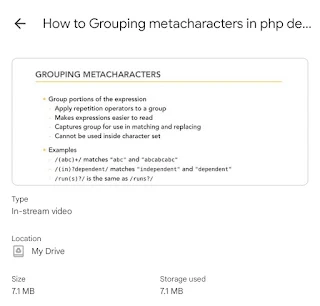Regular expressions are a powerful tool in PHP for pattern matching and text manipulation. One of the most useful features of regular expressions is the ability to group metacharacters. This guide will walk you through how to group metacharacters effectively in PHP development, enhancing your ability to work with complex string patterns.
Understanding Grouping in Regular Expressions
1. Basic Grouping
In regular expressions, parentheses () are used to create a group. This allows you to apply quantifiers to the entire group or refer to the group later.
php$pattern = '/(abc)+/';
$subject = 'abcabcabc';
if (preg_match($pattern, $subject, $matches)) {
echo "Match found: " . $matches[0];
}
In this example, (abc)+ matches one or more occurrences of the string "abc".
2. Capturing Groups
Parentheses also create capturing groups, which allow you to extract specific parts of a matched string.
php$pattern = '/(\d{3})-(\d{2})-(\d{4})/';
$subject = '123-45-6789';
preg_match($pattern, $subject, $matches);
echo "Area Code: " . $matches[1] . "\n"; // Outputs 123
echo "Exchange Code: " . $matches[2] . "\n"; // Outputs 45
echo "Line Number: " . $matches[3] . "\n"; // Outputs 6789
Here, the regular expression captures the area code, exchange code, and line number separately.
3. Non-Capturing Groups
If you want to group parts of the pattern without capturing them, use (?:).
php$pattern = '/(?:\d{3}-){2}\d{4}/';
$subject = '123-456-7890';
if (preg_match($pattern, $subject)) {
echo "Valid phone number format.";
}
In this pattern, (?:\d{3}-) groups the first two parts of the phone number but does not capture them for later use.
4. Named Capturing Groups
PHP supports named capturing groups using (?<name>...). This feature allows for more readable and maintainable regular expressions.
php$pattern = '/(?<year>\d{4})-(?<month>\d{2})-(?<day>\d{2})/';
$subject = '2024-08-19';
preg_match($pattern, $subject, $matches);
echo "Year: " . $matches['year'] . "\n"; // Outputs 2024
echo "Month: " . $matches['month'] . "\n"; // Outputs 08
echo "Day: " . $matches['day'] . "\n"; // Outputs 19
Named groups make it clear what each part of the match represents, improving code readability.
5. Grouping with Quantifiers
You can apply quantifiers to entire groups to specify how many times the group should repeat.
php$pattern = '/(abc){2,4}/';
$subject = 'abcabcabcabc';
if (preg_match($pattern, $subject)) {
echo "Pattern matched with 2 to 4 occurrences of 'abc'.";
}
In this example, (abc){2,4} matches "abc" repeated between 2 and 4 times.
Conclusion
Grouping metacharacters in PHP regular expressions allows you to build complex patterns and efficiently extract data. By using basic, non-capturing, and named groups, you can tailor your regular expressions to fit your specific needs. Experiment with these techniques to enhance your string manipulation and validation tasks in PHP.
Enjoy! Follow us for more...



No comments:
Post a Comment